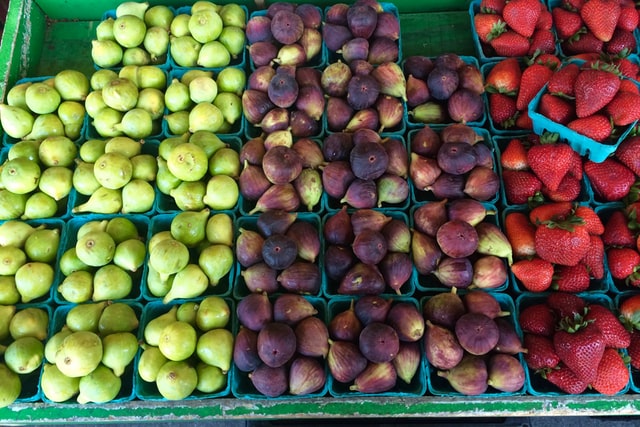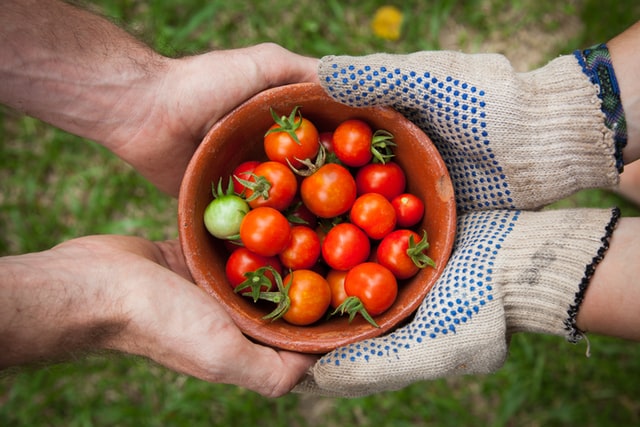Thanks to globalization, we can expect to find all sorts of fruits and vegetables from all over the world regardless of their seasonality in most developed countries’ supermarkets. But did you know that eating locally sourced food is actually much healthier for you?

We are spoiled with choices every time we go shopping: we can choose from a huge range of fresh and frozen fruit, vegetables, pre-cooked meals, dry and canned food and we usually don’t know where they come from.
Every day we are taking for granted the fact that we have the luxury of eating avocado at breakfast, pasta with fresh tomatoes at lunch, jackfruit at dinner and strawberry with cream as a dessert. We are able to do so even in the middle of the winter and potentially in a country that doesn’t originally grow any of these foods.
As a result, very few people are aware and care to know which fruits and vegetables are native of their homeland and when they are harvested during the year any more. The vast majority of people in 2021 don’t grow their food and won’t cook it either.
I come from Italy and my grandmother has been a farmer for her entire life. My dad decided to work in a different job sector but during his spare time, he managed to harvest a small patch of our land and breed chickens. When I decided to move to London in 2016, I broke the family tradition, like many people from my generation.
Living in one bedroom flat in a big city forces you to adapt to a more modern kind of lifestyle. We have endless food options, like never before in history, however, we have never been so disconnected from which food we should buy organic.
What does seasonal food mean and why is it important to buy locally sourced food?

We have 4 different seasons during the year, spring, summer, autumn and winter.
Each season has different weather conditions and that’s why in nature different foods grow better at different times of the year in a specific country.
It is quite challenging to know exactly what is in season in your country because there is always something in season somewhere in the world and supermarkets don’t help us understand the difference between what foods are in season and/or locally sourced and which are not.
Therefore, there is still a lot of confusion regarding locally sourced food.
Why does eating in season matter?
There are several perks of eating seasonal fruit and vegetables: it’s good for the planet, the community, your pockets and your waistline.
1. A better choice for the environment
The first reason to opt for seasonal fruits and vegetables is that it reduces the number of miles your food has to travel before it reaches your plate. Decreasing our carbon footprint helps us to be more sustainable because it lowers pollution and greenhouse gas emissions.
Moreover, vegetables and fruits in season from local street vendors are usually not wrapped in plastic.
Avoiding packaging waste ultimately contributes to relieving our impact on the planet.
2. Vegetables and fruits in season and locally sourced are healthier.
Buying from the farmers market and eating locally promotes your personal and family wellness all year round as the season produce has many health benefits.
Fruits and vegetables in season are usually better quality, richer in flavor, and have higher nutritional value because they are picked when ripe. Eating what’s in season will also help us having a varied diet throughout the year, which is one of the most recommended healthy habits of people living leaner & longer.
Sticking to the seasonality of fruit and vegetables secure cleaner produce because it avoids overseas contaminates while non-seasonal food is often polluted to lengthen their shelf life.
Often times mass produced food is covered in pesticides and contains a lot of hormones that were used to make it grow faster. This is not something that is mentioned on any labels when purchasing fresh produce but is often a side effect of the industry. By buying locally sourced food you can usually avoid a lot of the harsh chemicals that are used to keep that food lasting fresh longer as well.
3. Eating seasonally and locally sourced food is cheaper.
Common misconceptions about seasonal foods are that seasonal fruits and veggies are expensive and difficult to find, which might put shoppers off. On the contrary, one of the benefits of eating seasonal and locally sourced fruits and vegetables is that it will save you money.
Even in big cities like London, there are plenty of local markets where street vendors are selling reasonably priced in-season produce. If you are on a tight budget, a frugal trick is to go shopping at the end of each day, when sellers usually do hefty discounts to get rid of the products left.
Besides, today is much easier to eat seasonally and locally even for those who don’t have access to local markets thanks to food box subscriptions that allow us to access in-season fruit and vegetables without effort. You have the luxury of getting fresh produce delivered straight to your doorstep, which is especially convenient during a pandemic where we are encouraged to leave the house only when it is really necessary.
4. It is better for our economy

Buying local food directly helps your community to thrive because it creates jobs. Supporting the local farmers, grocery stores and small businesses is the last but not least of the many benefits of eating fruits and vegetables that are in season and buying locally sourced food.
It is also “good for the soil: Local food encourages diversification of local agriculture, which reduces the reliance on monoculture—single crops grown over a wide area to the detriment of soils.” from the Ecowatch.com
Cons of buying foods in season
Admittedly, seasonality in food has some disadvantages such as reduced variety.
When opting for locally sourced food and native produce you won’t have endless choices because there is only a certain amount of seasonal vegetables and fruits available locally at a specific time of the year.
Additionally, sometimes organic, local fruits and vegetables don’t look as nice and perfect as the ones displayed at the supermarkets because they have not been sprayed with pesticides so they might be a little wonky and misshaped.
Despite these minor downsides, it is worth shopping and consuming seasonal food that has been locally produced.
Below I have listed the main fruits and vegetables available each season to help you choose your seasonal ingredients with more awareness. It will depend from state to state, but a general guideline can be very useful anyways.
Seasonality of fruits in the US
Spring
· Apricots
· Avocado
· Mango
· Pineapple
· Rhubarb
· Strawberries
. Cherries
Summer
· Blackberries
· Blueberries
· Nectarines
· Peaches
· Plums
· Raspberries
· Watermelon
. Melon
Fall
· Apples
· Cranberries
· Figs
· Grapes
· Pears
· Pomegranate
Winter
· Chestnuts
· Grapefruit
· Lemons
· Oranges
· Tangerines
Seasonality of vegetables in the US
Spring
· Artichoke
· Asparagus
· Carrots
· Spinach
. Peas
. Spring onions
· Chives
· Collards
· Fennel
· Mustard Greens
. Radish
Summer
· Broccoli
· Cucumber
· Green Beans
· Zucchini
· Tomatoes
. Aubergines
. Broad beans
. Pak choi
. Rocket
. Peppers
Fall
· Quince
· Butternut Squash
· Cauliflower
· Garlic
· Ginger
· Mushrooms
· Potatoes
· Pumpkin
· Sweet Potatoes
· Swiss Chard
. Celery
Winter
· Kale
· Leeks
· Radicchio
· Radishes
· Rutabaga
· Turnips
. Onions
. Parsnip
. Cabbage
. Beets
. Winter squash
. Celeriac
. Shallots
. Swedes
About the Author: Alba is the content writer of Femicate, a lifestyle blog about intentional living where she shares: Frugal and minimalist lifestyle advice, slow fashion styling hacks, sustainable & zero waste tips and tricks that made my life easier and yummy, healthy recipes that are easy to prepare and ready under 30 minutes. You can follow her on Instagram: https://www.instagram.com/femicate/
